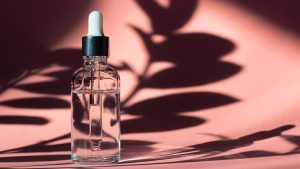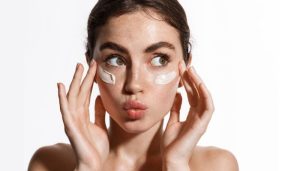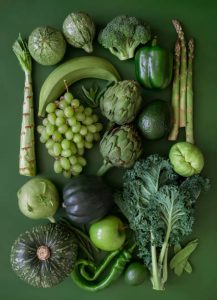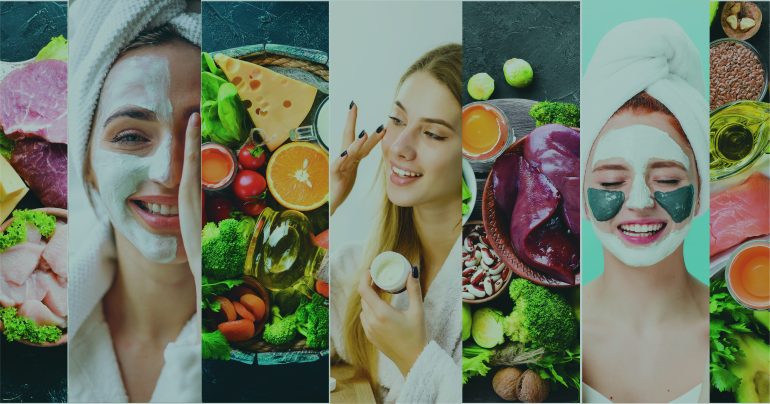The search for the ideal product is an age-old endeavour in the enchanted world of skincare, where elixirs and potions compete for a place on our bathroom shelves. Serums, creams, acids, and treatments abound on the market, each promising to work a little skin magic. In search of the elusive, flawless complexion, we have applied snail mucin, praised niacinamide, and ventured into the unknown.
Have we ever stopped in our passionate pursuit of skincare to consider what our skin actually wants? Have we ever yearned for a single, miraculous remedy that could solve 99% of our skin problems among this symphony of products?
A gem shines brighter than the others in the variety of beauty secrets, so gather around, dear seekers of skin’s deepest desires. A story told in the waning hours of skincare rituals, it is a name whispered in low tones. Despite the fact that everyone in the world is aware of its name, its function remains a mystery. Watch as we pull back the silken curtain to reveal Retinol, the secret to your radiant dreams and the hidden treasure of Litgleam.
This is not just any serum or lotion, my fellow enthusiasts. It’s a strong elixir that works magic on your skin like a sorcerer’s wand or a pinch of celestial stardust. Because beneath its modest exterior resides the ability to transform, renew, and reveal a face that echoes the whispers of timeless beauty.
What Is Retinol?
Because of its extraordinary advantages for the skin, retinol is a potent vitamin A derivative that is frequently used in skincare products. Retinol for the skin has many benefits, making it a popular ingredient in skincare regimens. Vitamin A, or retinol, is a fat-soluble nutrient that is necessary for many bodily processes, including supporting the immune system and maintaining skin health, and vision. Retinol is a topical treatment used in skincare to address a variety of skin issues.
Wondering what kind of skin issues retinol can fix? Here is a list of issues retinol helps with:
Wrinkles and fine lines:
Retinol increases the production of collagen, which can lessen the visibility of fine lines and wrinkles and produce smoother, firmer skin.
Skin Texture: uneven
Retinol encourages cell turnover, which aids in the removal of dead skin cells and reveals a softer, more even texture to the skin.
Breakouts and Acne:
Retinol can lessen inflammation, open up pores, and encourage the exfoliation of dead skin cells, which keeps them from getting stuck in pores and aids in the treatment and prevention of acne.
Dark Spots and Hyperpigmentation:
Retinol can lighten dark spots and hyperpigmentation brought on by age spots, sun damage, or post-inflammatory hyperpigmentation (PIH) from acne.

Dull Skin:
Retinol can lighten skin tone by removing dull, dead skin cells to reveal younger-looking, more radiant skin underneath. Your skin does not need to be dull just like your dating life. Do something about it. Not your dating life, your skin dullness.
Sun Damage:
Unlike the damage that your past relationship did to your mental health, retinol can help to repair some of the harm. Not the trauma your ex caused, but the one that UV radiation causes to the skin, including fine lines, problems with pigmentation, and uneven skin texture.
Large Pores:
Having large pores is completely normal. There are multiple reasons that cause the pores to get enlarged. Retinol can help lessen the appearance of large pores by lowering oil production and preventing clogged pores. *-
Anti-ageing:
Retinol is a potent anti-ageing ingredient that can address a variety of skin-ageing symptoms, such as loss of firmness and elasticity. Stress also contributes to early signs of ageing. Stop being delulu about the situationship that is not texting you back, you will be fine.
How to use retinol?
To maximize the benefits of retinol and reduce any potential side effects, it is essential to use it properly. Here is a step-by-step tutorial on applying retinol correctly:
1. Begin Slowly: If you’re new to using retinol, start out by using it only a couple of times per week. Increase the frequency gradually as your skin can handle it. This aids in product acclimatization for your skin.
2. Select the Appropriate Product: Based on your skin type and concerns, choose a retinol product with the proper concentration. Beginners should use concentrations between 0.25 and 0.5 per cent, while seasoned users should use concentrations of 1 per cent or higher. Do consult a dermatologist before adding retinol to your regime.
3. Evening Application: Because retinol can make your skin more sensitive to sunlight, it should only be used at night.
4. Gently Cleanse: To remove makeup and impurities, start by using a mild cleanser. Dry off your face using a fresh towel.
5. Pea-sized: A pea-sized amount of retinol product should be applied to your entire face. A little bit is often enough.
6. Avoid Eye Area: Retinol can be too harsh to apply directly to the eye area. Instead, if necessary, apply a different eye cream.
7. Moisturize: Apply a moisturizer after to seal in moisture. This lessens any potential dryness brought on by retinol.
8. Patience is Key: Being persistent and patient is important. It might take a few weeks before you notice any changes in your skin.
Retinol Do’s and Don’ts
DO’S
Patch test: Test retinol on a small patch of skin to see if there are any adverse reactions or allergies before applying it all over your face.
Cleanse Your Face First: Always begin by washing your face. Before using retinol, gently cleanse your skin to get rid of any makeup, dirt, and impurities.
Employ a Pea-sized: with retinol, a little goes a long way. To cover your entire face, use a small amount (about the size of a pea).
Retinol should only be used at night because it can make your skin more sensitive to sunlight.
Apply a moisturizer after using retinol to help prevent dryness and keep the skin hydrated.
Use sunscreen: When using retinol, sunscreen use is mandatory. It aids in shielding your skin from increased sensitivity to the sun and potential harm.
DON’TS
Avoid Overuse: Retinol overuse can cause excessive dryness, redness, and irritation. Follow the suggested dosage.
Don’t Apply to Wet Skin: Before applying retinol to your face, make sure it is completely dry. Its potential to irritate skin is increased when applied to damp skin.
Avoid the Eye Area: The delicate skin around the eyes can be harmed by retinol. If necessary, use an additional eye cream.
Don’t Mix with Certain Ingredients: When first starting out, stay away from mixing retinol with other strong skincare ingredients like beta hydroxy acids (BHAs), alpha hydroxy acids (AHAs), or vitamin C. These might make the skin more sensitive.
Don’t Overdo It: Stop using retinol as frequently if you notice excessive redness, peeling, or irritation. Until your skin is healed, cut back on use or take a break.
Retinol is not advised for use during pregnancy or while breastfeeding because it could harm the developing fetus.
Don’t Expect Immediate Results: Using retinol on your skin can take weeks or months to see noticeable results. Maintain your routine with patience.
Protection from the sun is essential, even on cloudy days, so don’t forget to use it. Sunburn and further skin deterioration can result from not wearing sunscreen.
Foods that will help with retinol production
You did not know that food products can also help you with retinol production and healthy skin, did you? Don’t worry! Here are dietary products that will help in boosting retinol production.
Eggs: Retinol can be found in egg yolks, which are also a good source of dietary vitamin A.
Milk, cheese, and yogurt are dairy products that contain vitamin A and can help you meet your daily requirements.
Fatty fish: Fish like mackerel and salmon offer retinol as well as other skin-friendly nutrients.

Leafy Greens: Beta-carotene, a precursor to vitamin A, is abundant in vegetables like spinach, kale, and collard greens. Beta-carotene can be transformed by your body into retinol.
Carrots, sweet potatoes, butternut squash, and pumpkin are among the vegetables that are orange and yellow and are high in beta-carotene.
Fruits that are red or orange: Mangoes, cantaloupes, and red bell peppers are among the fruits that are rich in beta-carotene.
Retinol and vitamin D are concentrated in cod liver oil, which is a type of fat.
May you consistently, and with a heart full of self-love embrace the transformative power of retinol. Retinol is more than just a skincare ingredient; it represents our desire to be the best versions of ourselves.
So, here’s to all the mornings you’ll wake up with refreshed skin, to all the evenings your complexion will glow with newfound radiance, and to all the times you’ll look in the mirror and see a canvas painted with the colours of self-love.




